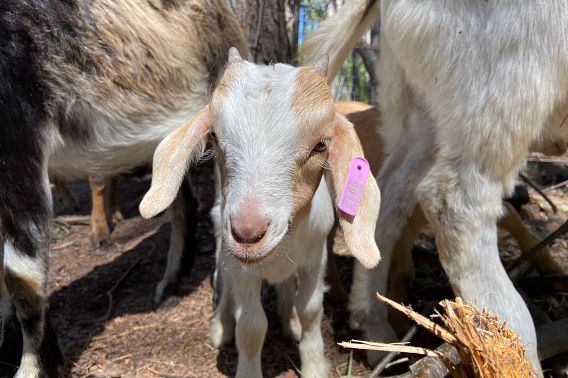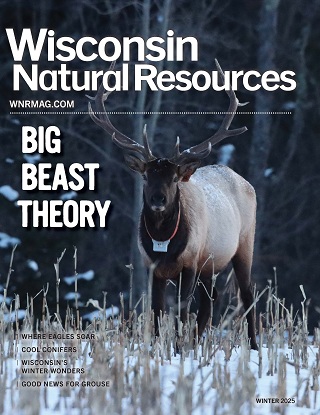Contact: Dan Kephart, DNR Brule River State Forest Property Manager
Daniel.Kephart@wisconsin.gov or 715-296-7728
DNR's Newest Land Managers – Goats
 The DNR is getting help from goats to combat buckthorn, an invasive species, at Brule River State Forest.
Photo credit: Wisconsin DNR
The DNR is getting help from goats to combat buckthorn, an invasive species, at Brule River State Forest.
Photo credit: Wisconsin DNR
BRULE, Wis. – The Wisconsin Department of Natural Resources (DNR) today announced a special class of new land managers working at the Brule River State Forest. Goats.
Beginning in May 2022, the DNR partnered with Regenerative Ruminants to place goats in portions of the Brule River State Forest overrun with buckthorn, an invasive plant, as part of the department’s integrated pest management plan.
“Buckthorn has been a problem on the Brule River State Forest for a long time,” said Dan Kephart, DNR Brule River State Forest Property Manager. “It’s really important to the forest ecologically and aesthetically that we inhibit these invasive species as much as we can and promote native species. We're trying to evaluate how effective this project can be, so it's exciting to see what will happen.”
Invasive plants, animals and pests are taking a toll on Wisconsin's lakes, rivers and landscapes. The DNR is working with the public and other partners to slow the spread of invasive species across the state. Through educational outreach, strategic planning and active management – including the use of goats – we are protecting our environment and economy from invasives.
The goats eat woody invasive plants, including buckthorn, that outcompete native vegetation and are detrimental to ecosystem health. Clearing out these harmful plants will allow the forest to regenerate.
Depending on the site, there are various ways to treat invasive plants. Goat grazing is often an effective method for reducing herbicide use.
“We're always being asked to reduce the amount of pesticide that we use. We want the forest to be able to regenerate our native species. If invasive species get in the way, it makes it very difficult to do so,” said Mary Bartkowiak, DNR Invasive Plant Coordinator. “If the invasives out compete all of the native vegetation, we won't have the sugar maples, red pines or the white pines because they would be overtopped by the invasives.”
Like other management methods, goat grazing is a long-term treatment. The goats have rotated throughout this site at the Brule River State Forest several times this summer and are now back for another round of grazing. Since the seeds of the invasive plants remain in the soil for several years, the department will evaluate the area in upcoming seasons to determine if the goats or other treatment methods are needed.
When visiting parks and forests, be sure to wipe your shoes and clean your equipment before arrival and when you depart to help avoid spreading harmful invasive species like buckthorn.
More information about invasive species in Wisconsin is available on the DNR website here.

